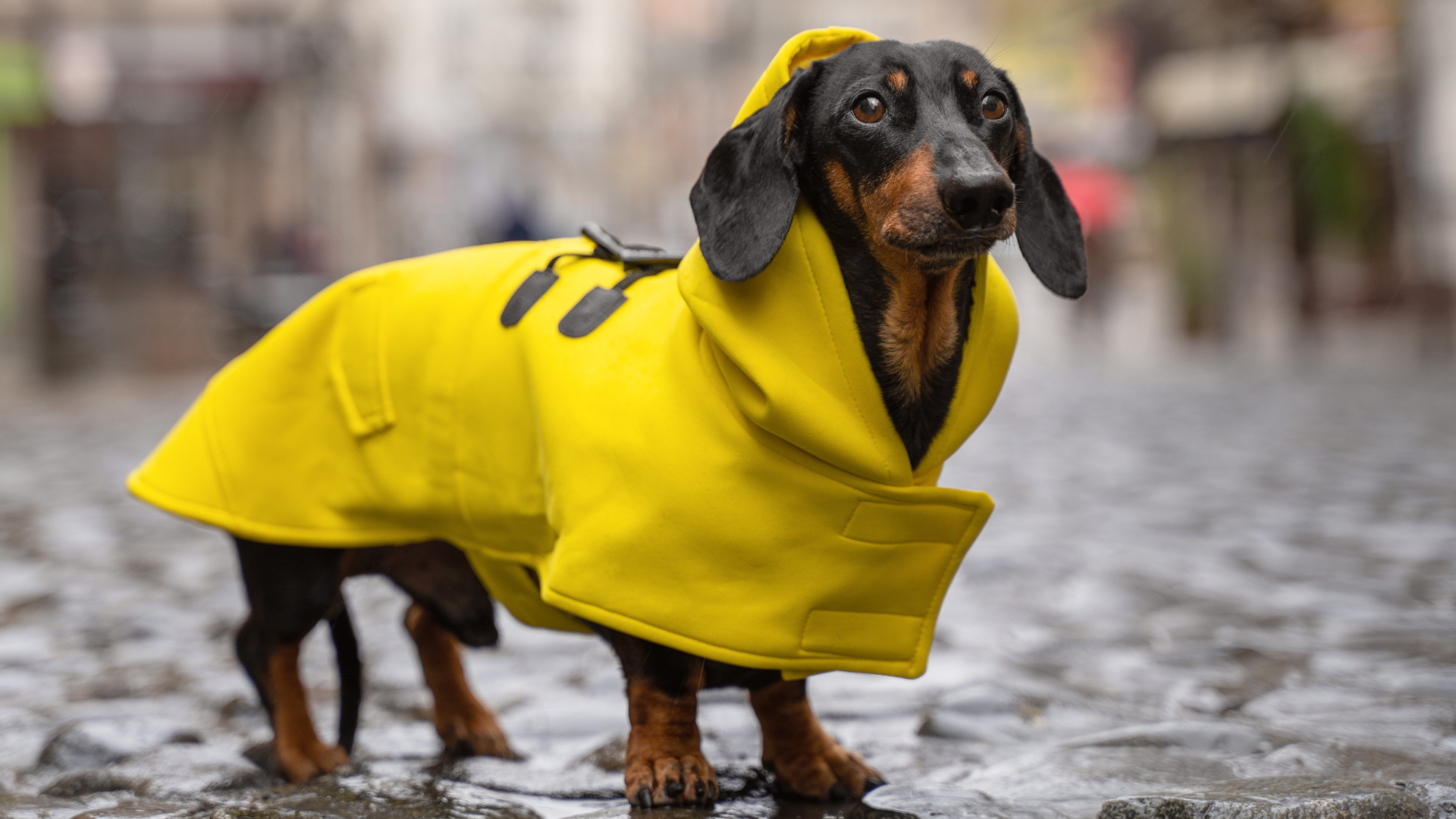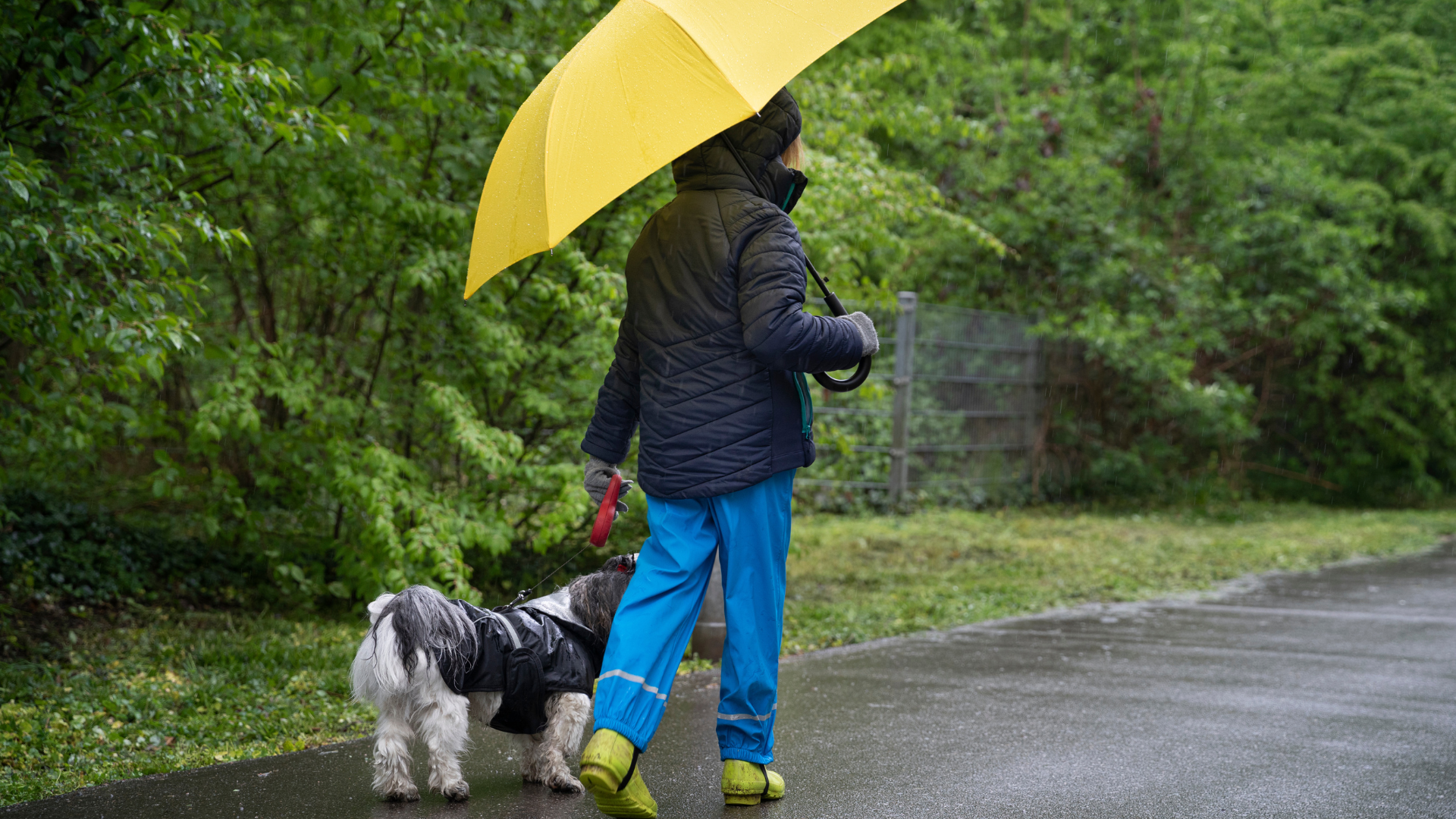
As a new dog owner, you may be wondering, “Can I go for a dog walk in the rain?” While some dogs absolutely hate rain, others love a wet wander, so it will all depend on the preferences of you and your pet.
Whilst most rain isn’t dangerous, there are some considerations you should bear in mind before braving the tempest. Ahead of your walk, you might want to buy your dog a raincoat or some boots, as well as one of the best dog harnesses.
We’ve spoken to a vet to get their views on what measures should be taken to keep you and your pooch comfortable on a rainy day.
Can I go for a dog walk in the rain?
When walking your dog in the rain, you need to consider safety. Wet weather tends to lower visibility and as such, you might want to put your dog in something reflective or add a light-up band to their collar. This will help you to see them if they are off-leash, and will also make them more visible to traffic and other pedestrians if you are in a built-up area.
If you have a dog with a thin coat or a coat that takes a long time to dry, you might want to put them in their own raincoat. For one that fits your dog well, measure the length of their back from their neck to the base of their tail and the depth of their chest.
Can dogs get sick from walking in the rain?
If your dog is particularly young and has not had their full course of vaccinations yet, or old and struggling with stiff or uncomfortable joints, then it might be worth skipping a long walk in the rain for their health and comfort.
“Dogs don’t generally get sick just from being outside in the rain,” says vet Dr. Kelly Hood, who also represents Pet Portraits. “They can’t catch a cold like we sometimes do just from getting wet, but if they’re out in cold and wet weather for a long time, it might wear them down a bit and make it easier for them to pick up other bugs. This is especially true for dogs already dealing with health issues or breeds that aren’t built for cold weather. If your dog’s already not feeling well, a rainy walk probably isn’t the best idea. Also, it’s important to always dry them off after a wet walk (especially paws and ears) to prevent any skin problems or ear infections.”
“One thing to watch out for is puddles, they can sometimes contain bacteria or chemicals that will make your dog sick,” adds Dr. Hood.
Avoid letting your dog drink from puddles as they can contain all sorts of nasties, particularly around roads where run-off from car tires is likely to be in the water. Dogs generally love drinking water they aren’t supposed to, so keep a close eye on your pet on wet walks.

Do dogs like walking in the rain?
This will most likely come down to the preference of your individual dog. If they are bred to retrieve game from lakes, like a springer spaniel or a labrador retriever, they’re more likely to tolerate or even enjoy the rain. Breeds with thinner coats and less body fat to keep them warm, like greyhounds and whippets, tend to be less equipped to deal with rain and might not appreciate a rainy walk as much as their spaniel compatriots.
Having a pocket full of the best dog treats might help to tempt a reluctant pooch out into the rain, and having a warm towel waiting to dry them off on your return might make the experience better for them. Waterproofs can help to keep skinny dogs warm and dry and you can even get goggles for particularly rain-shy dogs.
My dog won’t walk in the rain - what do I do?
“It’s really important not to force them,” says Dr. Hood. “Instead, try making it more fun for them. Maybe bring along their favorite toy and treat. Every dog is different. Some breeds might love splashing in puddles and some might prefer to stay cozy indoors when it’s wet outside.”
Dr. Hood also recommends waiting for a gap in the rain if your dog really doesn’t like rainy walks, or keeping the walks short to keep your dog as comfortable as possible. You might want to try these eight fun games to play with dogs instead.
“If a walk is out of the question, there are many indoor games you can play to keep them active. The main thing is to keep your dog comfortable while making sure they get enough exercise and mental stimulation,” she adds.
If you have a new pooch at home and are trying to work out whether they would be more comfortable in a harness vs collar, we’ve explored your options. Or, if you’re wondering why your dog hates their harness, we’ve investigated the possibilities so you don’t have to.







